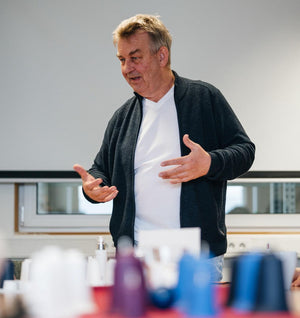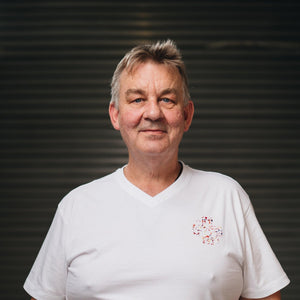Cupping physiotherapy
by Gabriele Kiesling
Become pain-free and flexible through a new, modern form of cupping? You can achieve this and much more yourself and also learn exciting specialist content for your body health.
Cupping is much more than just cupping. My idea of combining two effective therapy methods to create the new type of cupping physiotherapy has revolutionized my fascia physiotherapy significantly. Changes in the fascia can finally be treated automatically using a variety of targeted techniques - these include negative pressure, thrust or precise pressure.
The short but convincing success story of my new therapeutic approach consisting of cupping and fascia physiotherapy is based, on the one hand, in the wealth of experience of conventional medically oriented physiotherapy and, on the other hand, in the latest knowledge of international fascia research. Significant successes have been achieved in both fields in the past. And now the best of both worlds can be combined with my empirical application experience. I have already achieved numerous successes with it. The combination of my physiotherapy exercise concept, which has been tried and tested for decades, and the fascia physiotherapy that I founded can now show you an effective way to successfully self-treat your body, regardless of numerous symptoms.

Also experts like Dr. Robert Schleip, director of the Fascia Research Group at Ulm University, is convinced of this. Dr. Schleip once described the combination treatment with the new silicone cups as, in his eyes, “one of the most interesting and promising myofascial treatment methods” that he knows.

»WELLNESS HELPS HEALING«
Fascia deserves our full attention. A central insight of this approach is well-being. Fascia should be treated with care and respect. They are branches of our brain. This knowledge was already postulated by the healer Andrew Still, to whom this groundbreaking insight goes back. He was one of the pioneers who co-founded osteopathy in 1899, and his statement is still valid today.
However, I do not consider all of the fascia therapy recommendations to be useful. In recent years, extremely painful fascia rolling therapies and extremely strong manual forms of treatment have emerged. In my opinion these are not particularly helpful. Pain always means stress for the fascia. And stress is the main cause of fascial changes. Therefore, the pain should be avoided at all costs.
My motto is: “Well-sickness helps heal.” This means that the pain must be felt, but only as strong as necessary. Because exactly the feeling of “well-sickness” makes it clear to you when you act on yourself: This is exactly the right place, the epicenter of my complaints. Once this area of well-being is found, healing can begin. On a pain scale from 1 (almost not painful) to 10 (very bad), the feel-good pain is a maximum of 3. This central sensation regulates the fascial structures, expands your movement options and reduces dysregulation, such as incorrect movement patterns, as quickly as possible. This makes your body noticeably light and supple. This is your goal with cupping physical therapy!
FASCIA ARE SMARTER THAN YOU THINK
Fascia is smart. With over 100 million sensors, they detect everything that affects our bodies very well. Fascia is like our sixth sense, equipped with pain sensitivity, movement control receptors and deep sensitivity. These are important for an appropriate physical reaction to disturbances. Cupping plus physiotherapy is the modern, practical method of fascia self-treatment. I would like to show you exactly how the process works so that you too can use it and benefit from it sustainably.
With this method you have a novel, selected, tried and tested, contemporary and targeted self-treatment method, free from fashion trends, based on qualified physiotherapeutic expertise and modern fascia science. This means you have both theoretical and practical support for self-treatment at hand. But whatever you do, always remain self-critical, because in cases of doubt there is of course no substitute for a visit to the doctor or targeted, individual physiotherapy.
Good luck on your very personal path to healing and health!
Cupping physiotherapy
This is where cupping physiotherapy has a special and targeted effect

The best cupping techniques
I've been asked again and again what exactly happens under the skin during cupping. Here you can see simplified representations of tissue changes caused by pressure, thrust and negative pressure, so that you can better imagine how the cups work.

I have selected the best of the numerous possible uses for the cups and described them for you in such a way that they are easy to implement. You can see which techniques are best used for each exercise by looking at the icons next to the exercise name in my book:
EXPERT TIP
- Fascia is our most important sensory organ, the so-called sixth sense.
- Over 100 million fascia sensors have already been discovered and scientifically recognized.
- Fascia has a very special architecture made up of collagen and elastic parts.
- The average weight of the fascia is 20 kilograms based on a person weighing 60 kilograms. So they make up around a third of our body weight.
- Fascia surrounds us completely, like a diving suit. Externally and internally they also run through the organs and brain, bones, muscles and many other areas.
- Fascia doesn't like stress.
- They love a diet with excess alkaline content.
- Fascia can regenerate within seven months









